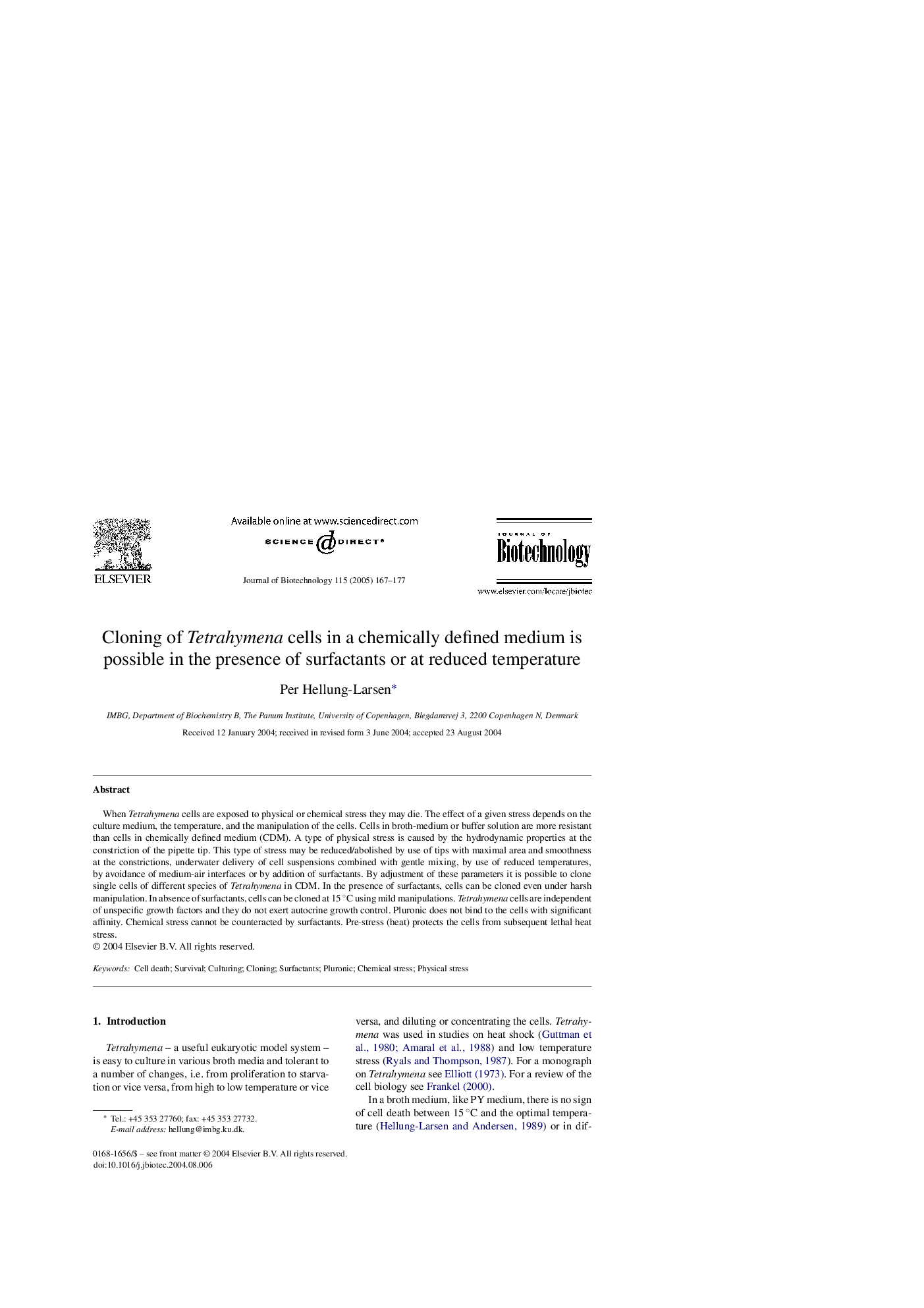| Article ID | Journal | Published Year | Pages | File Type |
|---|---|---|---|---|
| 9604491 | Journal of Biotechnology | 2005 | 11 Pages |
Abstract
When Tetrahymena cells are exposed to physical or chemical stress they may die. The effect of a given stress depends on the culture medium, the temperature, and the manipulation of the cells. Cells in broth-medium or buffer solution are more resistant than cells in chemically defined medium (CDM). A type of physical stress is caused by the hydrodynamic properties at the constriction of the pipette tip. This type of stress may be reduced/abolished by use of tips with maximal area and smoothness at the constrictions, underwater delivery of cell suspensions combined with gentle mixing, by use of reduced temperatures, by avoidance of medium-air interfaces or by addition of surfactants. By adjustment of these parameters it is possible to clone single cells of different species of Tetrahymena in CDM. In the presence of surfactants, cells can be cloned even under harsh manipulation. In absence of surfactants, cells can be cloned at 15 °C using mild manipulations. Tetrahymena cells are independent of unspecific growth factors and they do not exert autocrine growth control. Pluronic does not bind to the cells with significant affinity. Chemical stress cannot be counteracted by surfactants. Pre-stress (heat) protects the cells from subsequent lethal heat stress.
Related Topics
Physical Sciences and Engineering
Chemical Engineering
Bioengineering
Authors
Per Hellung-Larsen,
